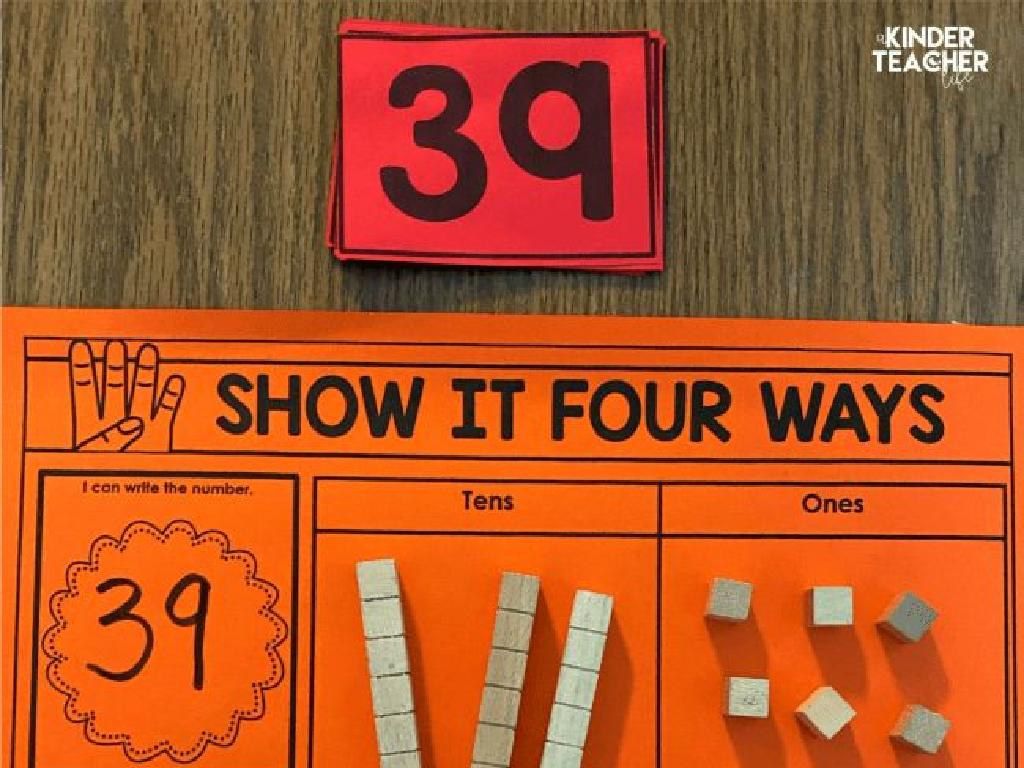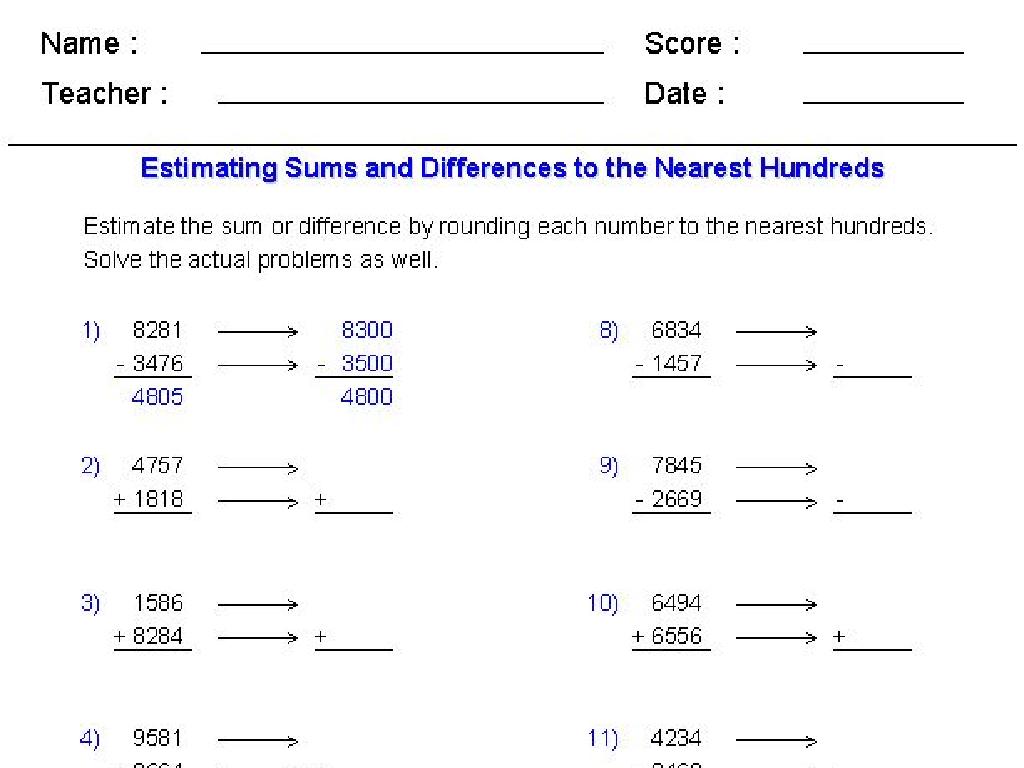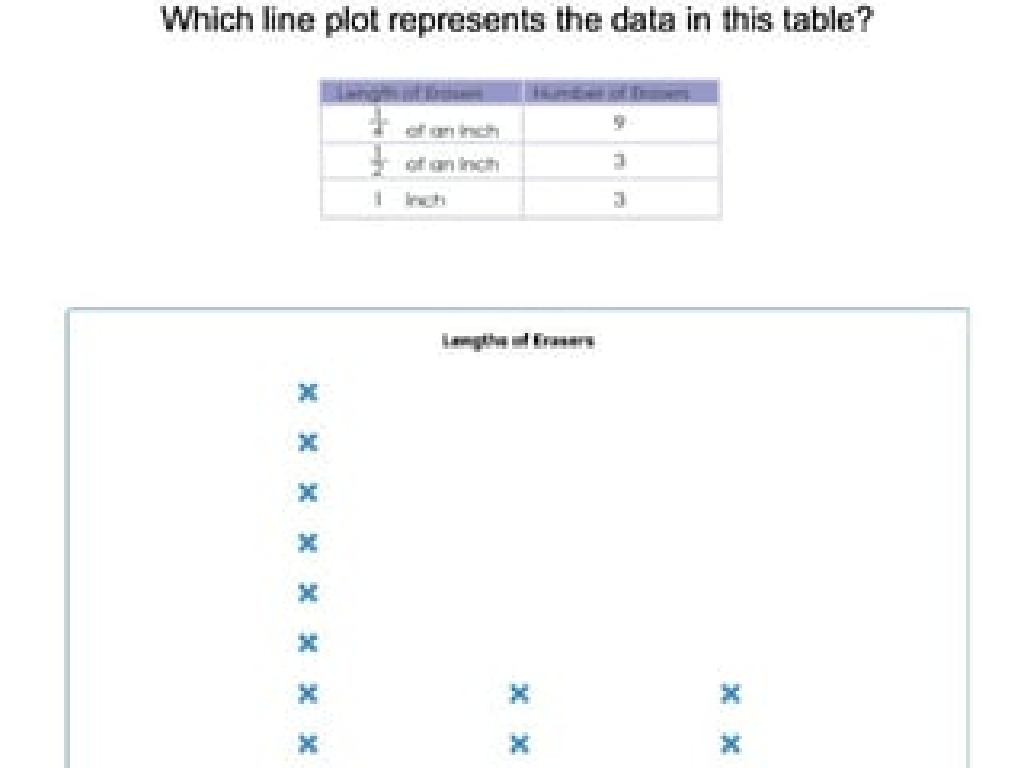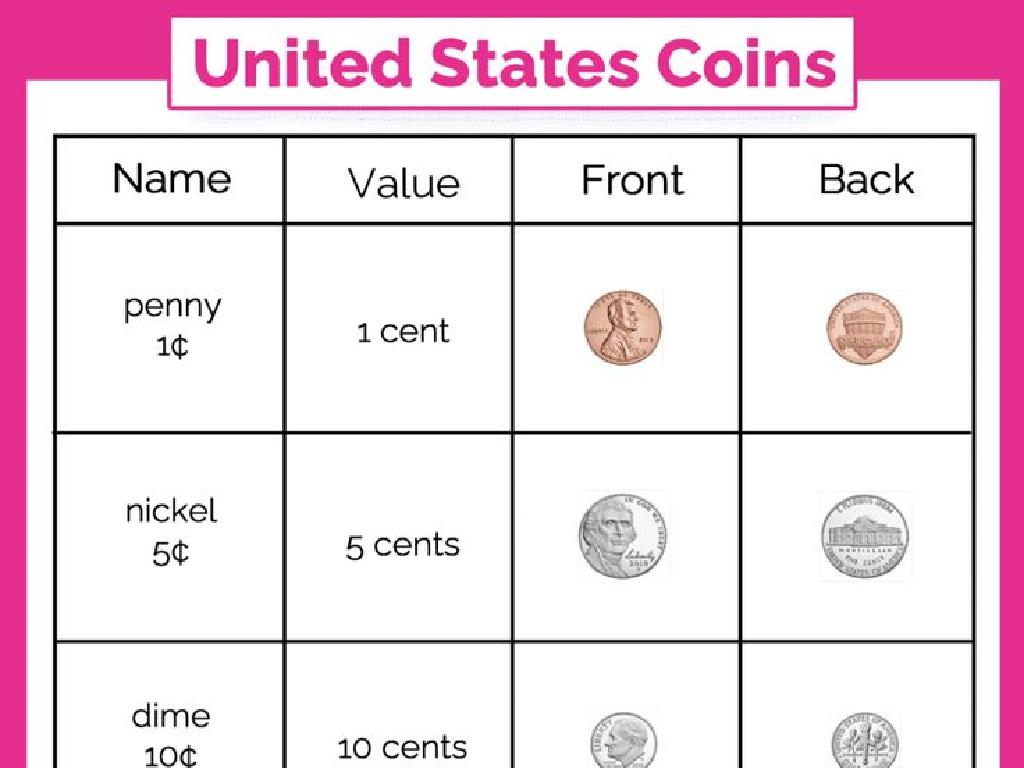Evaluate Numerical Expressions With Parentheses
Subject: Math
Grade: Fifth grade
Topic: Numerical Expressions
Please LOG IN to download the presentation. Access is available to registered users only.
View More Content
Understanding Numerical Expressions with Parentheses
– Learn to evaluate expressions
– Importance of parentheses
– Parentheses indicate which operation to perform first
– Real-life applications
– Use in budgeting, cooking, and construction
– Practice problems
– Solve sample expressions with different numbers
|
Today’s objective is to help students understand the role of parentheses in numerical expressions and how to evaluate them correctly. Emphasize that parentheses are crucial because they tell us which part of the expression to solve first, following the order of operations. Connect the lesson to real-life situations where numerical expressions are used, such as budgeting money, measuring ingredients in cooking, or calculating materials needed for a construction project. Provide practice problems for students to apply what they’ve learned, ensuring they grasp the concept of evaluating expressions with parentheses. Encourage students to think of other areas where they might use these skills.
Understanding Numerical Expressions with Parentheses
– Define numerical expression
– A mathematical phrase with numbers and operations
– Simple expression examples
– Examples: 3 + 4 or 2 x 5
– Introducing parentheses
– Parentheses group parts of an expression
– Parentheses change value
|
This slide introduces the concept of numerical expressions to fifth-grade students, explaining that these are mathematical phrases combining numbers and operations such as addition, subtraction, multiplication, and division. Provide simple examples that the students are already familiar with to build confidence. Then, introduce the concept of parentheses, explaining that they are used to group parts of an expression and that they can change the order in which operations are performed, thus affecting the value of the expression. Emphasize that operations within parentheses should be completed first when evaluating an expression. Encourage students to practice with different expressions to see how parentheses affect the outcome.
The Role of Parentheses in Numerical Expressions
– Parentheses alter operation order
Operations inside parentheses are done first, e.g., 2 * (3 + 4) vs 2 * 3 + 4.
– Compare expressions with/without parentheses
5 + (2 * 3) is different from 5 + 2 * 3. Parentheses change the result!
– Group numbers with parentheses
Use parentheses to group numbers, like (2 + 3) * (4 + 5).
– Practice with class examples
Let’s solve 3 * (4 + 5) vs 3 * 4 + 5 together.
|
This slide introduces the concept of parentheses in mathematical expressions and their effect on the order of operations. Emphasize that any operation within parentheses should be completed first, which can significantly change the outcome of the expression. Provide clear examples showing the difference in results when parentheses are used versus when they are not. Encourage students to group numbers using parentheses to simplify complex expressions. Engage the class with practice examples, asking them to solve expressions with and without parentheses and discuss the different results.
Mastering PEMDAS: Understanding Order of Operations
– Review PEMDAS rules
– PEMDAS: Parentheses, Exponents, Multiplication/Division, Addition/Subtraction
– Practice PEMDAS with examples
– Solve 3 x (4 + 2) vs 3 x 4 + 2 to see the difference
– Focus on parentheses in PEMDAS
– Parentheses tell us to do that part first
– Why order matters in math
|
Begin with a review of the PEMDAS acronym, which stands for Parentheses, Exponents, Multiplication and Division (from left to right), and Addition and Subtraction (from left to right). This rule helps students remember the correct order of operations in a mathematical expression. Provide practice problems that specifically include parentheses to emphasize their importance. Explain that parentheses indicate which operations should be performed first, and ignoring them can lead to incorrect answers. Use examples to show how the same numbers can yield different results depending on the order of operations. The slide aims to reinforce the concept that the order in which we solve parts of a numerical expression is crucial to finding the correct answer.
Evaluating Expressions with Parentheses
– Steps to evaluate expressions
– First, solve within parentheses, then follow order of operations.
– Work through examples together
– Example: For 2 x (3 + 4), first calculate (3 + 4) = 7, then multiply by 2.
– Common mistakes to watch for
– Mistakes: Ignoring parentheses, wrong order of operations.
– Practice problems for mastery
|
This slide is aimed at teaching fifth graders how to correctly evaluate numerical expressions that include parentheses. Begin with a clear explanation of the importance of following the order of operations, with emphasis on solving expressions within parentheses first. Work through several examples as a class to demonstrate the process. Highlight common mistakes such as ignoring the parentheses or misapplying the order of operations, and explain how to avoid them. Conclude with practice problems to ensure students can apply what they’ve learned independently. Encourage students to explain their reasoning for each step to reinforce their understanding.
Let’s Practice Together: Parentheses in Math
– Interactive class examples
– Student board problem solving
– Students take turns to solve expressions with parentheses on the board
– Discuss various solving methods
– Talk about how each student approached the problem
– Embrace different perspectives
– Understand that there may be multiple ways to solve a problem correctly
|
This slide is designed to engage students in an interactive learning experience. Begin with guided examples on the board, demonstrating how to evaluate expressions with parentheses. Then, invite students to the board to solve similar problems, ensuring a variety of expressions are used to cover different cases. Facilitate a class discussion on the methods used, highlighting different strategies and reinforcing the concept that there can be more than one way to reach the correct answer. Encourage students to explain their thought process, fostering a collaborative and supportive learning environment. This activity will help solidify their understanding of the order of operations and the role of parentheses in structuring numerical expressions.
Independent Practice: Mastering Parentheses
– Work on practice problems solo
– Discuss solutions with classmates
– Share your thinking, compare strategies
– Teacher support during practice
– Focus on expressions with parentheses
– Remember, solve inside the parentheses first!
|
This slide sets the stage for students to apply their knowledge of evaluating numerical expressions with parentheses through independent practice. Students should attempt to solve the problems on their own to reinforce their understanding. Encourage them to engage in peer discussions after attempting the problems to learn different approaches to problem-solving. The teacher should circulate the room to provide help where needed, ensuring students stay on task and understand the concept of ‘order of operations’ with a focus on solving the expressions inside the parentheses first. Prepare a set of practice problems with varying levels of difficulty to cater to the diverse skill levels within the class. Possible activities could include solving written problems, using manipulatives to represent expressions, or creating their own problems for peers to solve.
Review and Reflect: The Power of Parentheses
– Review practice problem answers
– Discuss any challenges faced
– Share difficulties in solving problems and learn from each other
– Understand parentheses significance
– Parentheses dictate the order of operations, changing how we solve expressions
– Reflect on learning and questions
|
This slide aims to consolidate the students’ understanding of evaluating numerical expressions with parentheses. Begin by reviewing the answers to the practice problems provided in the previous lesson, ensuring that students understand the correct solutions. Open the floor for students to discuss any difficulties they encountered while solving the problems, fostering a collaborative learning environment where they can learn from each other’s challenges. Emphasize the importance of parentheses in mathematical expressions, explaining how they alter the order of operations and affect the outcome of calculations. Encourage students to reflect on what they’ve learned and to ask questions about any aspect of the topic they’re still curious about. This reflection will help them internalize the concept and apply it confidently in future problems.
Class Activity: Create Your Own Expressions!
– Pair up and write expressions
– Swap expressions with another pair
– Solve the received expressions
– Discuss solutions as a class
– Share your thoughts on the expressions and how you solved them.
|
This interactive class activity is designed to engage students with the concept of numerical expressions with parentheses. Students will work in pairs to create their own expressions, fostering creativity and application of the lesson. After writing their expressions, they will exchange with another pair, which encourages collaboration and problem-solving skills. As they solve the new expressions, they will practice evaluating parentheses in math. The class discussion afterwards will provide an opportunity for students to explain their thought process and understand different approaches to the same problem. For the teacher: Prepare to guide the students in creating expressions, ensure they understand the order of operations, and facilitate the class discussion to highlight key learning points.
Wrapping Up: Expressions with Parentheses
– Review of numerical expressions
– Remember, parentheses mean ‘do this first’ in math problems.
– Homework: Practice problems
– Solve additional expressions with parentheses for homework.
– Teach the concept to someone
– Explain today’s lesson to a family member to reinforce learning.
– Keep practicing for mastery
|
As we conclude today’s lesson on evaluating numerical expressions with parentheses, it’s important to summarize the key points. Remind students that parentheses are used to indicate which operations should be performed first in a mathematical expression. For homework, assign a set of problems that require students to apply what they’ve learned. Encourage them to explain the concept to someone at home; teaching others can help solidify their understanding. Finally, stress the importance of regular practice to achieve mastery of the topic. Provide examples of expressions for homework and suggest that students create their own problems to challenge themselves further.






